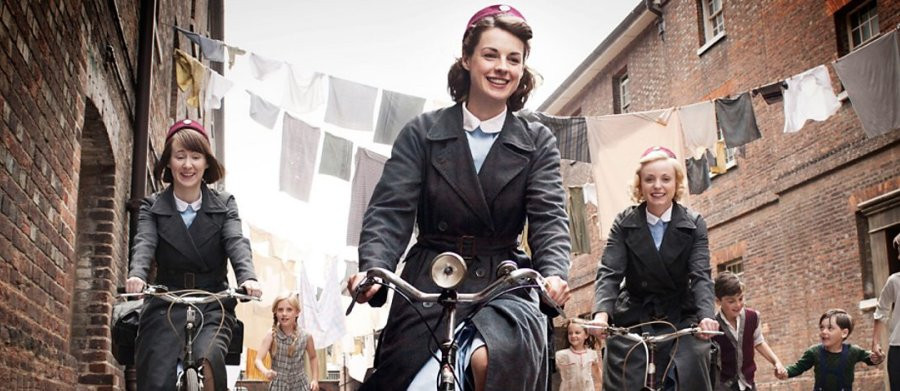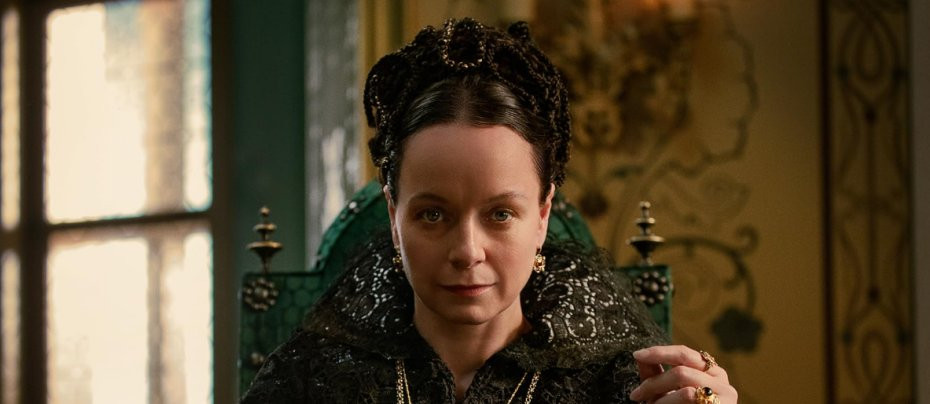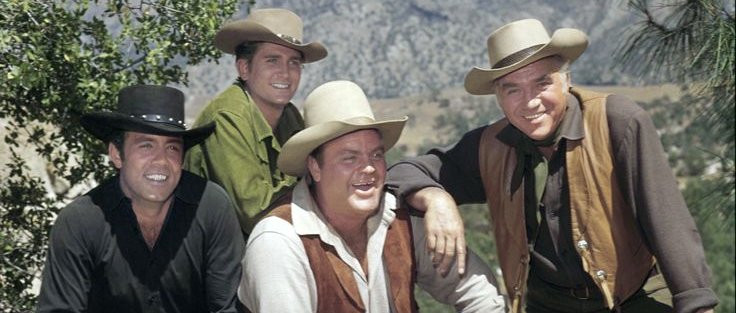
Hell on Wheels
2012 - United StatesReview: John Winterson Richards
Whatever one's views on Capitalism versus State intervention, it is hard to deny that the worst aspects of both were combined in the construction of the first transcontinental railway across the United States.
While the strategic and symbolic desirability of the venture to the young nation was clear, its commercial viability was not. There were simply not enough people who wanted to travel or ship goods from coast to coast at prices that would cover the huge costs of construction. So the Federal Government offered generous subsidies and land grants to two private sector companies, the Central Pacific building eastwards from the West Coast and the Union Pacific building westwards over the Great Plains.

It was in effect a race between the two: the more track each laid before they happened to meet in the middle, the more subsidy cash and land they would get. It was a licence to print money. The subsidies were syphoned off by corrupt subcontractors, while the land was seized with little or no regard to the rights of those who held it - settlers and Indians alike. This legalised theft became the real business of both companies, especially the Union Pacific, while the actual building of the railroad became almost an afterthought - something that had to be done to justify the Government expenditure. Coincidentally, a lot of that expenditure ended up in the pockets of the politicians who authorised it.
The nastiness of all this in practice is conveyed powerfully and all too accurately in Hell on Wheels. So are the difficulties faced by the managers, engineers, and working men who still had to build the railway - and the greatness of their achievements in overcoming those difficulties.

For it must not be forgotten that they did it. Against all the odds, and in spite of all the political intrigues and bribery and insider dealing, they built their roadroad, a triumph of engineering and organisation. Their story deserves to be told.
It is therefore a pity that Hell on Wheels received so little acclaim. In the United Kingdom, it was shown on a minor channel late at night with erratic and often inaccurate information in the television guides. It was as if someone wanted to bury it.
It certainly had none of the prestige of its role model, the highly regarded Deadwood. Then, to be fair, it had only a fraction of its budget. It was filmed fairly cheaply in Canada with relatively few well known names. As a result, while the actual Hell on Wheels - the name that really was given at the time to the mobile community at the Union Pacific's ever advancing railhead - was a major industrial undertaking in its own right, its television equivalent sometimes has the air of a static and neglected Frontier settlement. That does not stop the likes of Ulysses S Grant dropping in regularly for a cup of something - probably not tea in his case.

In spite of its economies, or perhaps because of them, this cut-price version of Deadwood managed to last two seasons and 21 episodes longer than the original. Note that the comparison with Deadwood is by no means an insult. Both shows employ a range of storylines, a brutal realism, and a willingness to explore the grubby underside of Old West mythology.
They also share a principal theme, the triumph of community - eventually and subject to a lot of qualifications. This is exemplified by the story arc of the wholly fictional main protagonist in Hell on Wheels, Cullen Bohannon. A former slave-owner and Confederate officer, he loses everything in the Civil War: his wife and son are murdered, his faith is left in shreds, and the culture of which he was a part is gone with the wind. He becomes a wanderer, the classic Western "man alone," rootless and obsessed with revenge for want of anything better.

It is revenge that brings him to Hell on Wheels. It is only very gradually and reluctantly that he becomes part of this mobile community - because it needs him and he needs to be needed. He is the perfect enforcer, but he is also a natural leader. He rises to become chief engineer of the Union Pacific before switching to the Central Pacific. He realises that the railroad needs him to build it, while the politicians and the businessmen squabble over the spoils, and he in turn needs it, to restore a sense of purpose to his life. In the final episode he identifies as "a railroad man."
He remains an interestingly ambiguous character. Genuinely hard and brutal, he kills ruthlessly, and not all of his victims deserve it. He claims at one point to have freed his slaves but admits later this was a lie. His exaggerated sense of honour in some respects is by no means inconsistent with a belief that ends justify means. He is played by Anson Mount, "channelling Clint Eastwood" in the words of one early review, but he soon moves beyond the familiar Eastwood cliches. There is a particularly fine scene in which he seems too determined to play the uncouth Westerner at a polite dinner - until mention is made of his roots, at which point his posture changes and he is transformed back into a Southern gentleman. It seems the character is supposed to represent how uniting the West and East with the railway also united North and South after the Civil War - a notion as fictional as Bohannon himself.

Good as he is, Mount, like everyone else in the cast, is thoroughly upstaged by Colm Meaney as the real life promoter of the Union Pacific, Thomas Durant. Meaney has had a fascinating career. He achieved the very unusual distinction of rising through the ranks from an unnamed "non dialogue" character who became a named character and then a recurring character before going on to be a regular in a successful "spin off" series - as Chief Miles O'Brien in Star Trek: The Next Generation and Star Trek: Deep Space Nine. He also pulled off the equally unusual, albeit not quite unique, achievement of becoming a familiar face in Irish, British, and American cinema at more or less the same time.
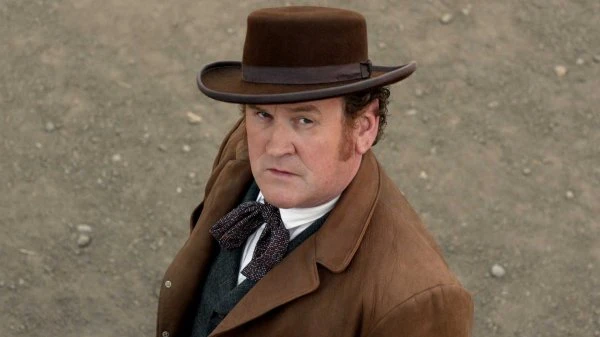
His work in Hell on Wheels might be his greatest achievement of all. He was born to play "Doc" Durant (it is a strange historical fact that the man was a fully qualified physician, and apparently a promising one, before finding his true vocation). What Meaney gives us is not so much a lovable rogue as a compelling scoundrel. Much as he would like to think otherwise, this Durant does not charm people - on the contrary, he is pompous and arrogant - but he wins them over with a combination of determination, animal power, and apparently limitless belief in himself and his railroad.
This is a credible explanation of why so many people, some of them honest and intelligent, including, apparently, Abraham Lincoln, were prepared to give the benefit of the doubt to someone of whom they were probably quite suspicious. It is also a hugely entertaining performance. From his very first appearance, his unscrupulousness is played to great comic effect and the series drags a bit in his absences.

As Bohannon's right-hand man, Elam Ferguson, Common has great presence but acts more like the hero of a 1970s "blaxploitation movie" than the former slave trying to find his role in the late 1860s he is meant to be. Dohn Norwood, playing Psalms Jackson, offers a more authentic portrait of a black working man trying to get on in a country that has just emancipated him but is unsure what to do with him.
The ever watchable Tom Noonan looks promising as a preacher with a past, but, sadly, the script gives him no more than the usual clichés that tend to define religious characters in recent drama - fanaticism, hypocrisy, and crisis of faith - and his storyline ends in absurdity.
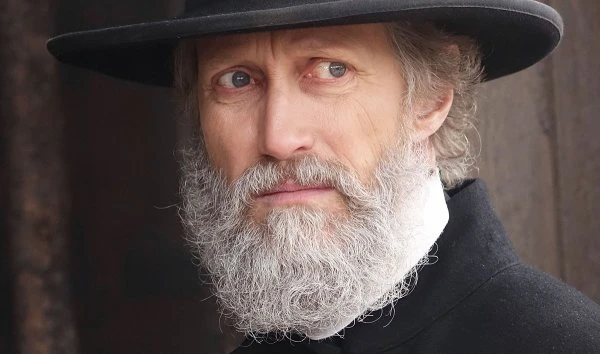
By contrast, Christopher Heyerdahl develops the role of Durant's leading heavy, "The Swede" - he keeps reminding people that he is in fact Norwegian - into a complex study in evil that is sometimes so unsettling that it seems to be bordering on the supernatural. If the twists and turns of his story seem unreal at times, well, the Old West was often like that.

Dominique McElligott rises above the scripting of her character to makes a strong, positive impression as a rather idealised heroine. The show never really recovers from her early departure - or at least it never quite rings true when Bohannon is supposed to be obsessed with other women later on. Robin McLeavy also makes a mark as a practical prostitute.

While the supporting and guest cast was obviously restricted by budget, there were typically classy contributions from Wes Studi and Virginia Madsen, and it is a pity we do not see more of them. Jake Weber ditches his amiable Medium persona to chilling effect as a corrupt politician - is there any other kind of politician in Hell on Wheels?
For all its constraints, the production has a nice eye for period detail in sets, props, and costumes, and the scripts are true to the basic essence of history if not always to the specific events or the realities of the situation. The gunfights, with unreliable 1860s technology, are particularly credible. The casual brutality of the Old West is conveyed very effectively.
In general, Hell on Wheels deserves to be better known and better appreciated. While the plot did wander a bit over five seasons, that too was the nature of the Old West. The characters remained interesting and some scenes were positively electric. If it was not quite Deadwood, it was a worthy tribute to it and it told a few truths of its own.
Seen this show? How do you rate it?
Seen this show? How do you rate it?
Published on March 20th, 2020. Written by John Winterson Richards for Television Heaven.




